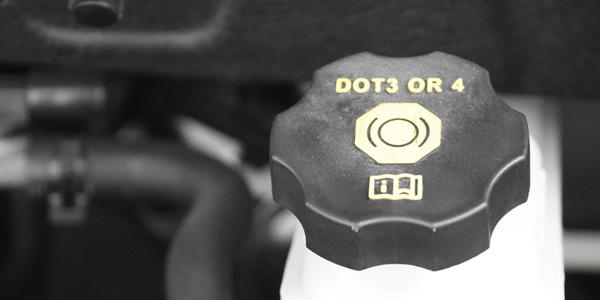
For obvious reasons, brakes are one of the most important systems on any vehicle. But one of the key components of any brake system – the fluid that provides the hydraulic power needed to ensure safe stopping distances – often is one of the most overlooked maintenance items.
Over time, brake fluid absorbs moisture. When moisture content rises, the boiling point of the fluid is lowered to where it can affect the system’s ability to stop a vehicle. This usually is indicated by a noticeable change in pedal pressure, often described as a “spongy” feeling that refers to either the pedal depressing harder or more easily than usual.
Moisture in brake fluid also causes corrosion that can adversely affect the fluid’s ability to protect brake systems and accelerate wear of brake-system components. It also can cause poor braking performance and lead to costly and potentially catastrophic failures.
Using the correct fluid is essential. Brake fluids can be grouped into glycol-based and silicone-based categories that are classified in accordance with U.S. Department of Transportation (DOT) standards based on their boiling point.
DOT 3, DOT 4 and DOT 5.1 are glycol-based brake fluids comprised of mineral oils, esters, glycol esters and synthetic oils. These fluids seal brake systems effectively. However, they also more readily absorb moisture from the atmosphere.
DOT 5 is a silicone-based fluid that doesn’t absorb water. However, if water gets into the brake system, it sinks to the bottom and rusts components internally.
Most vehicles use DOT 3 brake fluid, while some performance models require DOT 4 fluid because it can handle the higher heat of brake rotors without creating bubbles that impact brake-pedal feel and reduce braking ability.
DOT 5.1 fluid has an even higher boiling point and works well with vehicles equipped with ABS and traction-control systems. DOT 3, 4 and 5.1 are compatible with each other. However, it’s not advisable to mix fluid types, and you never should mix silicone- and glycol-based fluids.
A common misconception is that dark-colored brake fluid needs to be changed. In reality, color is not an indicator of brake-fluid quality, as some fluids naturally change color from light to dark as they come in contact with rubber brake-system components.
Basic brake-fluid maintenance can alleviate and prevent problems. Recommended practices include routinely evaluating the brake-fluid level and checking for contaminated fluid caused by leaks through the brake lines or master cylinder. Assessing the fluid’s condition at each PM or oil change is the best way to prevent premature brake-system damage due to corrosion, even in sealed systems.
Testing for moisture content in brake fluid is a valuable preventive-maintenance practice that can be done quickly and inexpensively relative to the cost of new brake-system components. Monitoring the condition of brake fluid with a moisture test strip can quickly indicate if the fluid’s boiling point has been compromised. The presence of moisture in brake fluid, along with heat and air, will oxidize the fluid, resulting in it being acidic (lower pH) and causing corrosion. In general, a pH reading of less than 7 will accelerate the rate of corrosion.
Many automakers recommend changing brake fluid every two years. The process of changing the fluid is a low-cost item that yields savings.
Acustrip Co. provides a number of brake-fluid test products. The Acustrip ACU6000 Series moisture test for brake fluid and the Acustrip 8000 Series (AcuTest-2) use test strips to check for moisture. In addition, the Acustrip brake-fluid pH test for in- service brake fluid uses ACU61000 or 61070 test strips to check pH to identify acidic brake fluid that is likely to result in costly brake-component failure.
For more information, visit www.acustrip.com.











